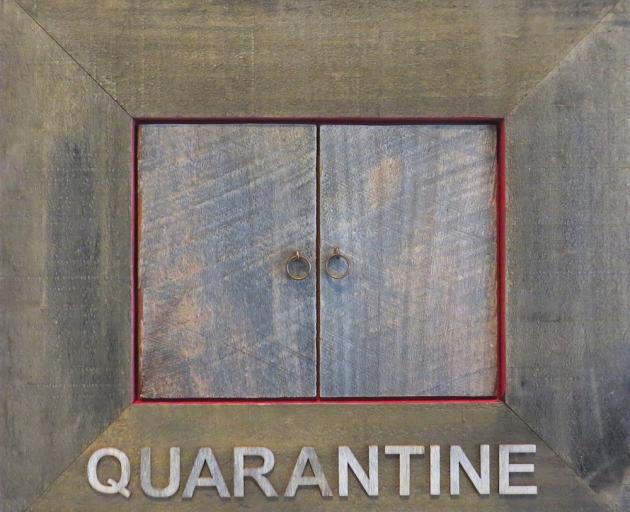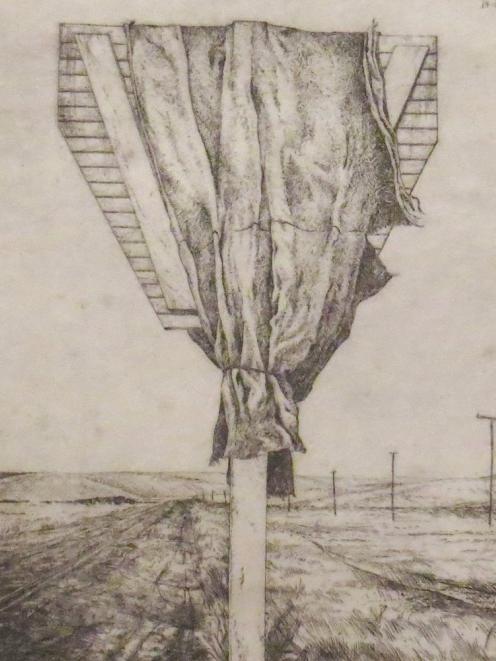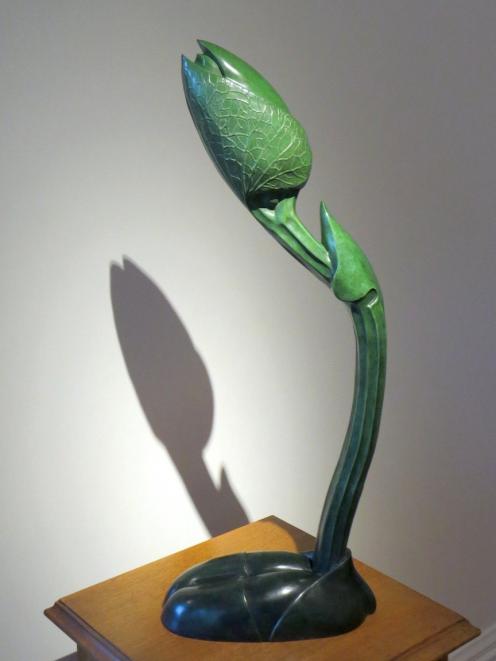James Dignan looks at exhibitions from Bellamys Gallery, Dunedin Public Art Gallery, and Marian Fountain.
 Quarantine, by John Bellamy
''Weathered'', Pauline Bellamy, Manu Berry and John Bellamy (Bellamys Gallery)
Quarantine, by John Bellamy
''Weathered'', Pauline Bellamy, Manu Berry and John Bellamy (Bellamys Gallery)

In ''Weathered'', three members of the Bellamy family look at the local urban and harbourside landscape in an exhibition timed to coincide with the city's Heritage Festival.
Pauline Bellamy's etchings explore the industrial and wharfside structures which dot the harbour's edge. The works are charming, with a softness of form and ease of line which denies their medium; there is a feel of gentle charcoal sketches about them, most notably in the graduated tones of road and harbour. Works such as Departure I attractively capture the spirit of the harbour, and Custom House Quay has an almost Dutch feel to the Dunedin scene it depicts.
Manu Berry's woodcuts present more hard-edged harbourside buildings, mostly around Port Chalmers. Although depicted in harsh black and white, the images present surprisingly subtle character studies of the structures. The character of buildings, such as former Chick's Hotel and the old Harbour Board offices, come through strongly in Berry's prints.
John Bellamy's works are the exhibition's main surprise. Usually the silent member of the family artistically, he has produced a series of mixed media works, many of them drawing on his construction and framing skills. The mysterious doorways of works such as What Treasure Rests Within and Quarantine, and the stark numbering of 2 provide many points for gallery visitors to ponder.
 Stop Sign, by Grahame Sydney
''Etched in Time'', Grahame Sydney (Dunedin Public Art Gallery)
Stop Sign, by Grahame Sydney
''Etched in Time'', Grahame Sydney (Dunedin Public Art Gallery)

Black-and-white printed works are also to the fore in the Dunedin Public Art Gallery's small display of early works by one of Otago's most notable painters, Grahame Sydney. Mainly thought of for the subtle use of palette in his Central Otago paintings, Sydney's early works contain many stunning monochrome etchings.
The exhibition's works date from 1975 to 1983, the years immediately following a trip to Europe in which Sydney studied the European art tradition first hand. The works display a great understanding of the use of shadow to create depth and as a compositional tool, an understanding which is as adeptly wielded in light, airy works such as Cluden Woolshed as in the nocturnal chiaroscuro of Camp Kitchen. Joe 90's Bed, despite its seemingly dowdy subject matter, displays a tour de force of soft shading, form, and the capture of light.
Perhaps the exhibition's most interesting works are those where a finished piece (Stop Sign) is presented alongside two detailed graphite studies, one of the sign itself and one of the background. Much is revealed in these sketches about the artist's thought processes regarding the composition and layout of the final work. A similar assessment can be made of the study and finished watercolour Near Nyngan, the latter being the exhibition's only coloured image.
 Pousse (Large Shoot), by Marian Fountain
''In Our Hands'', Marian Fountain (Fe29 Gallery)
Pousse (Large Shoot), by Marian Fountain
''In Our Hands'', Marian Fountain (Fe29 Gallery)

Marian Fountain is a major New Zealand bronze sculptor who has resided in Europe for many years. This exhibition, In Our Hands, gives us a rare opportunity to see a collection of her impressive work.
Fountain's work focuses on the human form and human connection with nature. Over a large series of pieces, we see this connectivity in all forms, from the small shelter pieces, showing miniature humans making their beds enclosed in giant leaves, to Freilauffen, a fertility figure which owes equal amounts to Willendorf and Fernand Leger.
Many of the works are tiny, jewellery-sized sculptures, referred to by the artist as ''medals''. These include such intriguing works as the environment-themed Connected medal and Occupy, the latter being an impressive bowl-shaped vessel allegorically depicting over-population.
Other works include impressive friezes and bas-reliefs such as Plantation and Croissance. The larger free-standing sculptures predominantly depict the birth of new seedlings, their forms creating semi-abstract patterns as they rise on their slender stalks. One other large work, Ancestral remote, is a standout. This piece is simultaneously a graceful depiction of the nude form and a revisionist, feminist take on the traditional Maori rakau whakapapa, with its beautiful evocation of the chain of female ancestors linked down through history.












